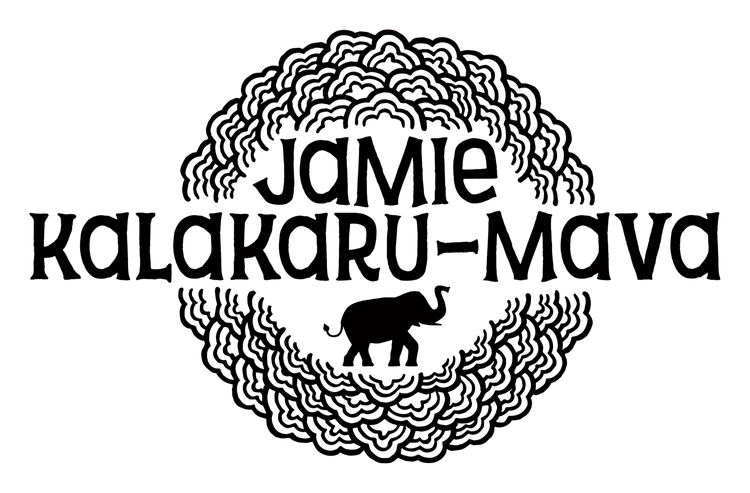Our role-based board was built to handle transition fluidly. When kicking off our board we built in staggered terms, so people weren’t ending their board terms all at once. As there were always people coming and going, always new folks at the table, our IT director, Clint Carlson, made a handy incoming and exiting checklist to help. We also tried to keep an informal “board buddy” system so that somebody could have a helping hand if they were new. We wanted to make people feel welcome and also get them comfortable quickly.
The interns had a separate training process, but similar. They would have an orientation with others in their cohort and set goals for their term, depending on what areas they wanted to learn more about. Between board members, interns, and exhibitions, it was always lively! The new system worked well for a while, and though our board ebbed and flowed in size, throughout we kept our organic shape. Board meetings were productive, and snacks were always involved. Towards the end of my time with Altered Esthetics, they regularly featured kids and babies too.
And then, in the spring of 2013, the transition got a little too . . . fluid. Our board chair was soon going to be moving out of the area, our solo exhibitions director had moved on, and our exhibitions director was about to begin a new graduate program. While we were used to transition and change, filling three of our most critical roles all in one fell swoop seemed to be a daunting task.
There were several board members that had the experience to help fill the gaps, but everybody was already pretty maxed out. How would we make a decision right for the gallery without putting everybody on the board through the wringer? I certainly did not want anybody to go through what I had gone through years prior. We wound up coming with a multifaceted approach. For the Solo Exhibitions Program, I took over the role temporarily until we recruited a permanent board member. The solo crew of artists that year was particularly awesome, not that I’m biased. For the board chair role, another seasoned board member stepped up to fill that role as an interim chair while we found a more permanent replacement.
The exhibitions director, on the other hand, was a more challenging role to fill. This person would be responsible for working with the curatorial interns on the fourteen annual exhibitions. Even though this position had the support of the exhibitions committee and the interns, it was still a very time-consuming role. A lot to expect, even for the most passionate and dedicated. But good news came in the form of a surprise: another board member, Lahli Trevis, also an artist, had applied for a Lead the Way grant from their workplace and won! The opportunity couldn’t have come at a better time. After discussing it with the board, it was decided that some of the money would be set aside for savings, and the rest would be used to make a critical investment: Altered Esthetics’ first contracted staff.
It was a challenging decision for the board to make, for a variety of reasons. We valued being volunteer-driven, and there was a certain quality that having an all-volunteer model brought to our scrappy little arts organization. However, we also valued paying artists for their work whenever possible. There were a few instances, though they were few and far between when we received grant funding to commission works and support artists with printing costs and supplemental help. Here was an opportunity we had—a rare occasion when our usually wafer-thin budget had a surplus—and we wanted to use it intelligently.
If I remember correctly, the vote was unanimous. An ad hoc hiring committee was formed, and we set out to recruit.
The hope was that with time we might be able to grow the exhibitions director position. We wanted to make sure we were compensating this person with a livable wage. After averaging out and estimating the hours we aimed for the equivalent of $15 an hour, above the Minneapolis livable wage at the time. Though the position was part-time, we still wanted to hit that target. The sheer number of truly amazing applications we received was humbling. In the end, it was a past intern we hired, somebody who brought not just familiarity with the gallery but also a tremendous level of professionalism to the role. She also had a background in fundraising, which we hoped would help as we worked together to grow the position. Angela Hedlund, a performance artist herself, began her position soon after being hired. Our outgoing exhibitions director, Amber, began training her immediately, a task very streamlined thanks to Angela’s work as a curatorial intern the prior year.
It was a good process to go through as a board, and a good test of our system working in a stressed setting. For a variety of reasons, I’m glad we hired from within. It helped with training and timing, but I’m very glad it came from our constituents. This decision proved to be a critical decision for us at the time. This would set us up for success later, as we evolved our programming even further and even more drastically in the year to come.
This post is adapted from It’s Never Going To Work: A Tale of Art and Nonprofits in the Minneapolis Community. The book includes illustrations by Athena Currier. ©2019 Jamie Schumacher.
It’s Never Going To Work is a light-hearted, illustrated book that offers real-life insights on founding a community space and nonprofit. It provides tools, tips, resources, and camaraderie to community organizers and anybody attempting something new.


